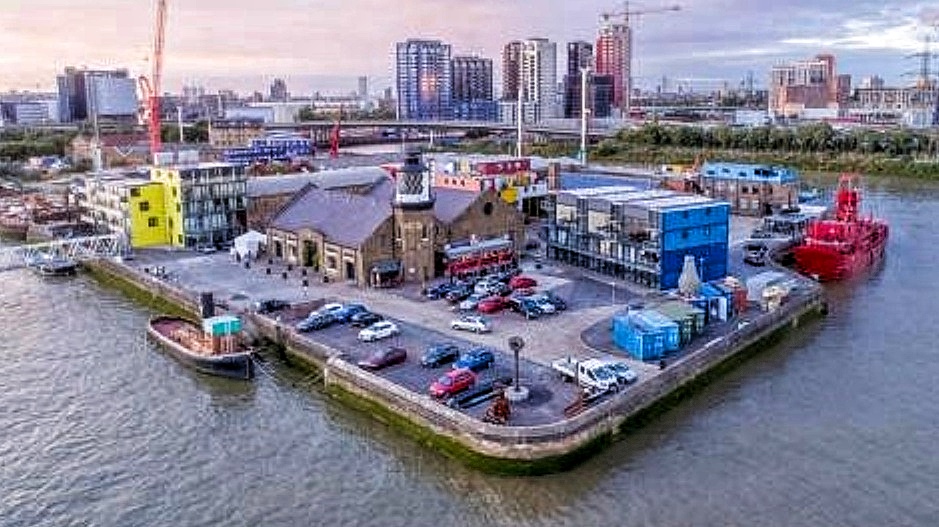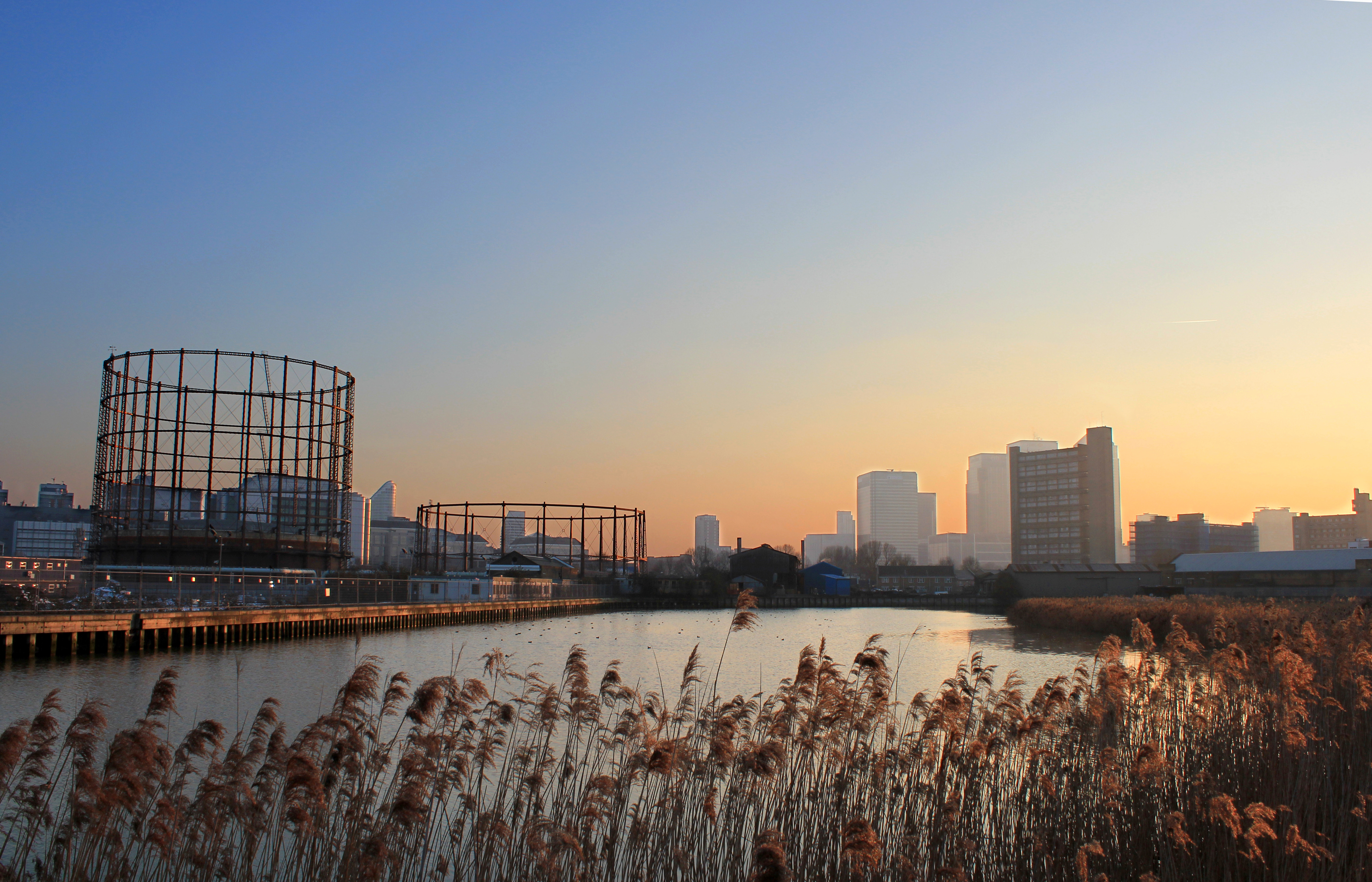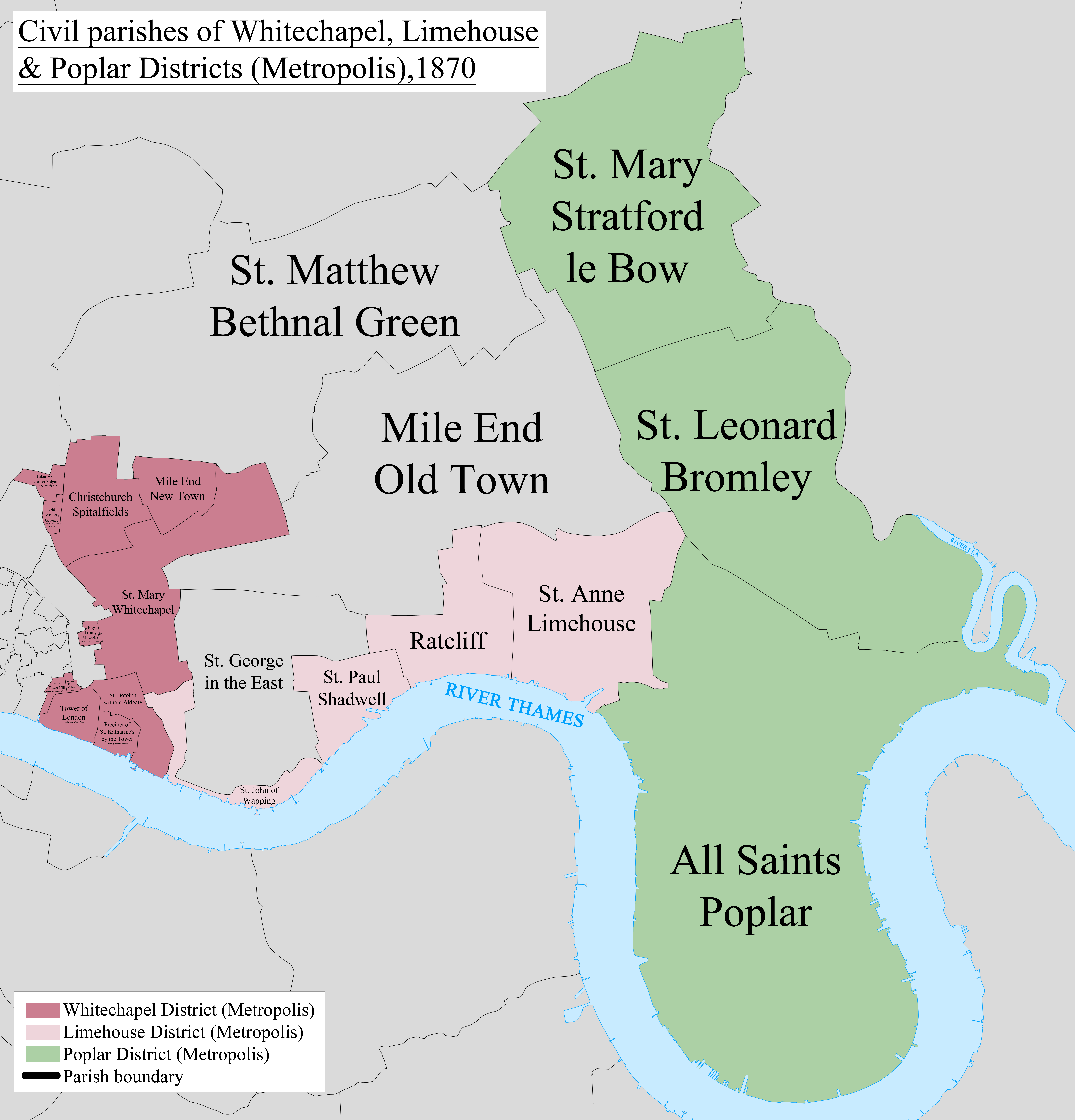|
Leamouth
Leamouth is a locality in the Blackwall area of Poplar, in the London Borough of Tower Hamlets. The area takes its name from the former ''Leamouth Wharf'' and lies on the west side of the confluence of the Bow Creek stretch of the Lea, at its confluence with the River Thames. The neighbourhood consists of two small peninsulas, separated from the rest of Poplar by the remaining part of the East India Docks. The northern peninsula lies in a hairpin meander and is named ''Goodluck Hope'' after one of the adjacent reaches of the Lea, while the other is known as ''Orchard Place''. The area was traditionally the easternmost part of Middlesex, with Essex on the other side of the Lea. The area was long referred to locally as ''Bog Island'', due to its inaccessibility and propensity to flood; however the building of the Thames Barrier and the artificial raising of the more vulnerable riverside land, means the nickname refers to a now much reduced threat. Administration The area ... [...More Info...] [...Related Items...] OR: [Wikipedia] [Google] [Baidu] |
Thames Iron Works
The Thames Ironworks and Shipbuilding Company, Limited was a shipyard and iron works straddling the mouth of Bow Creek at its confluence with the River Thames, at Leamouth Wharf (often referred to as Blackwall) on the west side and at Canning Town on the east side. Its main activity was shipbuilding, but it also diversified into civil engineering, marine engines, cranes, electrical engineering and motor cars.Jim Lewis 1999, ''London's Lea Valley'', Phillimore, The company notably produced iron work for Isambard Kingdom Brunel's Royal Albert Bridge over the Tamar in the 1850s, and the world's first all-iron warship, HMS ''Warrior'', launched in 1860. History 1837–46 The company originated in 1837 as the Ditchburn and Mare Shipbuilding Company, founded by shipwright Thomas J. Ditchburn and the engineer and naval architect Charles John Mare. Originally located at Deptford, after a fire destroyed their yard the company moved to Orchard Place in 1838, between the East I ... [...More Info...] [...Related Items...] OR: [Wikipedia] [Google] [Baidu] |
Blackwall, London
Blackwall is an area of Poplar, London, Poplar, in the London Borough of Tower Hamlets, East London. The neighbourhood includes Leamouth and the Coldharbour, Tower Hamlets, Coldharbour conservation area. The area takes its name from a historic stretch of riverside wall built along an outside curve of the River Thames, Thames, to protect the area from flooding. Along with the rest of Poplar, Blackwall has its origin in the Stepney#Manor and Ancient Parish, Manor and Ancient Parish of Stepney. While mostly residential, the Poplar Dock and West India Docks, Blackwall Basin provide moorings for vessels. Setting and administration The area's significance derived from its position on an outside curve of the Thames, where currents slowed down, making it a sheltered spot useful to a range of shipping activities. This sheltered position was enhanced by the presence of the Blackwall Rock reef, though this could also be a danger to shipping. A further advantage of the area was that it lay ... [...More Info...] [...Related Items...] OR: [Wikipedia] [Google] [Baidu] |
Bow Creek (London)
Bow Creek is a long tidal estuary of the English River Lea and is part of the Bow Back Rivers. Below Bow Locks the creek forms the boundary between the London Boroughs of Newham and Tower Hamlets, in East London. History The River Lea rises in the town of Luton in Bedfordshire, and flows to the east and then the south to reach the River Thames at Leamouth in Poplar. The final are known as Bow Creek, and follow a meandering route across a low-lying area formerly called Bromley Marsh, but now occupied by gas works and trading estates. The river is one of the oldest navigations in the country, but the creek is tidal, providing insufficient depth for navigation at low tide. Use of the river for navigation is recorded in documents dating from 1190 and it became the first river in Britain where improvements were authorised by an act of Parliament, the River Lee Navigation Act 1425 (3 Hen. 6. c. 5). The River Lee Navigation Act 1571 ( 13 Eliz. 1. c. 18) allowed the Lord Mayor ... [...More Info...] [...Related Items...] OR: [Wikipedia] [Google] [Baidu] |
Orchard House Yard
Orchard House Yard (known as Orchard Yard and Hercules Wharf) was an English shipbuilding yard located at Leamouth, on the River Lea at Bow Creek (England), Bow Creek . Forming part of the Orchard House estate, a number of shipbuilders occupied the site over time: * 1840 Ditchburn & Mare * 1846 C J Mare & Co * 1857 Thames Ironworks and Shipbuilding Company Ltd * 1873(pre) Joseph Spencer Watson * 1889 W J Jolly * 1890 H H Mackenzie/Mackenzie, MacAlpine & Co. The only known surviving vessel built at the yard is SS Robin, SS ''Robin'', a 300-ton steam-powered coaster which is part of the National Historic Fleet and the last of her type still in existence. She was built at Orchard House Yard in 1890 by Mackenzie and is currently located a short distance away in the Royal Victoria Dock. References External linksOrchard House – an account dating from 1935 by Charles Lammin [...More Info...] [...Related Items...] OR: [Wikipedia] [Google] [Baidu] |
Thames Plate Glass Company
Thames Plate Glass Company was a British glass works that operated from 1835 to 1874. Its factories were located at the northern end of Goodluck Hope peninsula, and it was a major employer in Orchard Place district. It demonstrated some very large plate glass at The Great Exhibition of 1851. The company produced part of the optics for the Craig telescope, a large telescope with a lens built in the 1850s. The lens was a doublet with a flint glass by Chance Brothers and a plate glass cast by Thames Plate Glass Company. In 1872 the company provided glass samples to Professor Barff. He had a lecture published about this in the Journal of the Society of the Arts in April 1872. He also noted statistics provided by the Thames Plate Glass Company, which state that the UK was producing 7.5 million feet of plate glass per year. The company went out of business by the mid-1870s. One of those employed by the company was Cuthbert Dixon, who went on to manage a plate-class company in America. ... [...More Info...] [...Related Items...] OR: [Wikipedia] [Google] [Baidu] |
Samuda Brothers
Samuda Brothers was an engineering and ship building firm at Cubitt Town on the Isle of Dogs in London, founded by Jacob and Joseph d'Aguilar Samuda. The site is now occupied by Samuda Estate. Samuda Brothers initially leased a premises on the Goodluck Hope peninsula, Leamouth, London, in 1843, by the mouth of Bow Creek. However disaster struck with one of their first ships, the ''Gipsy Queen'' which exploded on its test trip in November 1844. Jacob was killed with nine of the firm's employees. There was a further explosion at their shipyard in 1845 and another three workers were killed. The firm moved to Cubitt Town in 1852, having outgrown a site that was hemmed in by other industrial premises. By this time the company was run by Joseph, Jacob having been killed in the trial of the ''Gipsy Queen''. The Cubitt Town yard specialised in iron and steel warships and steam packets and by 1863 was said to be producing double the output of the other London shipyards combined. ... [...More Info...] [...Related Items...] OR: [Wikipedia] [Google] [Baidu] |
Poplar, London
Poplar is a district in the London Borough of Tower Hamlets. It is located five miles (8 km) east of Charing Cross and lies on the western bank of the River Lea. Poplar is identified as a major district centre in the London Plan, with its centre being Chrisp Street Market, a significant commercial and retail centre surrounded by extensive residential development. Originally part of the Manor and Ancient Parish of Stepney, the ''Hamlet of Poplar'' had become an autonomous area of Stepney by the 17th century, and an independent parish in 1817, the Parish and later Metropolitan Borough of Poplar. After a series of mergers, Poplar became part of the London Borough of Tower Hamlets in 1965. History Origin and administrative history Poplar was formerly part of the Manor and Ancient Parish of Stepney, and was first recorded in either 1327''The History of the Countryside'', Oliver Rackham, 1986, p207 or 1350. It took its name from the Black Poplar trees which once flourished ... [...More Info...] [...Related Items...] OR: [Wikipedia] [Google] [Baidu] |
HMS Warrior (1860)
HMS ''Warrior'' is a 40-gun steam-powered armoured frigate"Ironclad" is the general term for armoured warships of this period. Armoured frigates were initially designed for the same role as traditional wooden frigates; this later changed as the size and expense of these ships forced them to be used in the line of battle. built for the Royal Navy in 1859–1861. She was the name ship of the ''Warrior''-class ironclads. ''Warrior'' and her sister ship were the first armour-plated, iron- hulled warships, and were built in response to France's launching in 1859 of the first ocean-going ironclad warship, the wooden-hulled ''Gloire''. ''Warrior'' conducted a publicity tour of Great Britain in 1863 and spent her active career with the Channel Squadron. Obsolescent following the 1873 commissioning of the mastless and more capable HMS ''Devastation'', she was placed in reserve in 1875, and was "paid off" – decommissioned – in 1883. She subsequently served as a storeship a ... [...More Info...] [...Related Items...] OR: [Wikipedia] [Google] [Baidu] |
River Lea
The River Lea ( ) is in the East of England and Greater London. It originates in Bedfordshire, in the Chiltern Hills, and flows southeast through Hertfordshire, along the Essex border and into Greater London, to meet the River Thames at Bow Creek (England), Bow Creek. It is one of the largest rivers in London and the easternmost major tributary of the Thames. The river's significance as a major east–west barrier and boundary has tended to obscure its importance as north–south trade route. Below Hertford the river has since medieval times had alterations made to make it more navigable for boats between the Thames and eastern Hertfordshire and Essex, known as the Lee Navigation. This stimulated much industry along its banks. The navigable River Stort, the main tributary, joins it at Hoddesdon. While the lower Lea remains somewhat polluted, its upper stretch and tributaries, classified as chalk streams, are a major source of drinking water for London. An artificial waterway k ... [...More Info...] [...Related Items...] OR: [Wikipedia] [Google] [Baidu] |
Public House
A pub (short for public house) is in several countries a drinking establishment licensed to serve alcoholic drinks for consumption Licensing laws of the United Kingdom#On-licence, on the premises. The term first appeared in England in the late 17th century, to differentiate private houses from those open to the public as alehouses, taverns and inns. Today, there is no strict definition, but the Campaign for Real Ale (CAMRA) states a pub has four characteristics: # is open to the public without membership or residency # serves draught beer or cider without requiring food be consumed # has at least one indoor area not laid out for meals # allows drinks to be bought at a bar (i.e., not only table service) The history of pubs can be traced to taverns in Roman Britain, and through Anglo-Saxon alehouses, but it was not until the early 19th century that pubs, as they are today, first began to appear. The model also became popular in countries and regions of British influence, whe ... [...More Info...] [...Related Items...] OR: [Wikipedia] [Google] [Baidu] |
Treacle
Treacle () is any uncrystallised syrup made during the refining of sugar.Oxford Dictionary The most common forms of treacle are golden syrup, a pale variety, and black treacle, a darker variety similar to molasses. Black treacle has a distinctively strong, slightly bitter flavour, and a richer colour than golden syrup. Golden syrup treacle is a common sweetener and condiment in British cuisine, found in such dishes as treacle tart and treacle sponge pudding. Etymology Historically, the Middle English term was used by herbalists and Apothecary, apothecaries to describe a medicine (also called ''theriac'' or ''theriaca''), composed of many ingredients, that was used as an antidote for poisons, snakebites, and various other ailments. ''Triacle'' comes from the Old French , in turn from (unattested and reconstructed) Vulgar Latin , which comes from Latin , the latinization (literature), latinisation of the Ancient Greek language, Greek (), the feminine of (), 'concerning venomous ... [...More Info...] [...Related Items...] OR: [Wikipedia] [Google] [Baidu] |
Indiana
Indiana ( ) is a U.S. state, state in the Midwestern United States, Midwestern region of the United States. It borders Lake Michigan to the northwest, Michigan to the north and northeast, Ohio to the east, the Ohio River and Kentucky to the south and southeast, and the Wabash River and Illinois to the west. Nicknamed "the Hoosier State", Indiana is the List of U.S. states and territories by area, 38th-largest by area and the List of U.S. states and territories by population, 17th-most populous of the List of states and territories of the United States, 50 states. Its capital and largest city is Indianapolis. Indiana was admitted to the Union as the 19th state on December 11, 1816. Indigenous peoples of the Americas, Indigenous resistance to American settlement was broken with defeat of the Tecumseh's confederacy in 1813. The new settlers were primarily Americans of British people, British ancestry from the East Coast of the United States, eastern seaboard and the Upland South ... [...More Info...] [...Related Items...] OR: [Wikipedia] [Google] [Baidu] |










